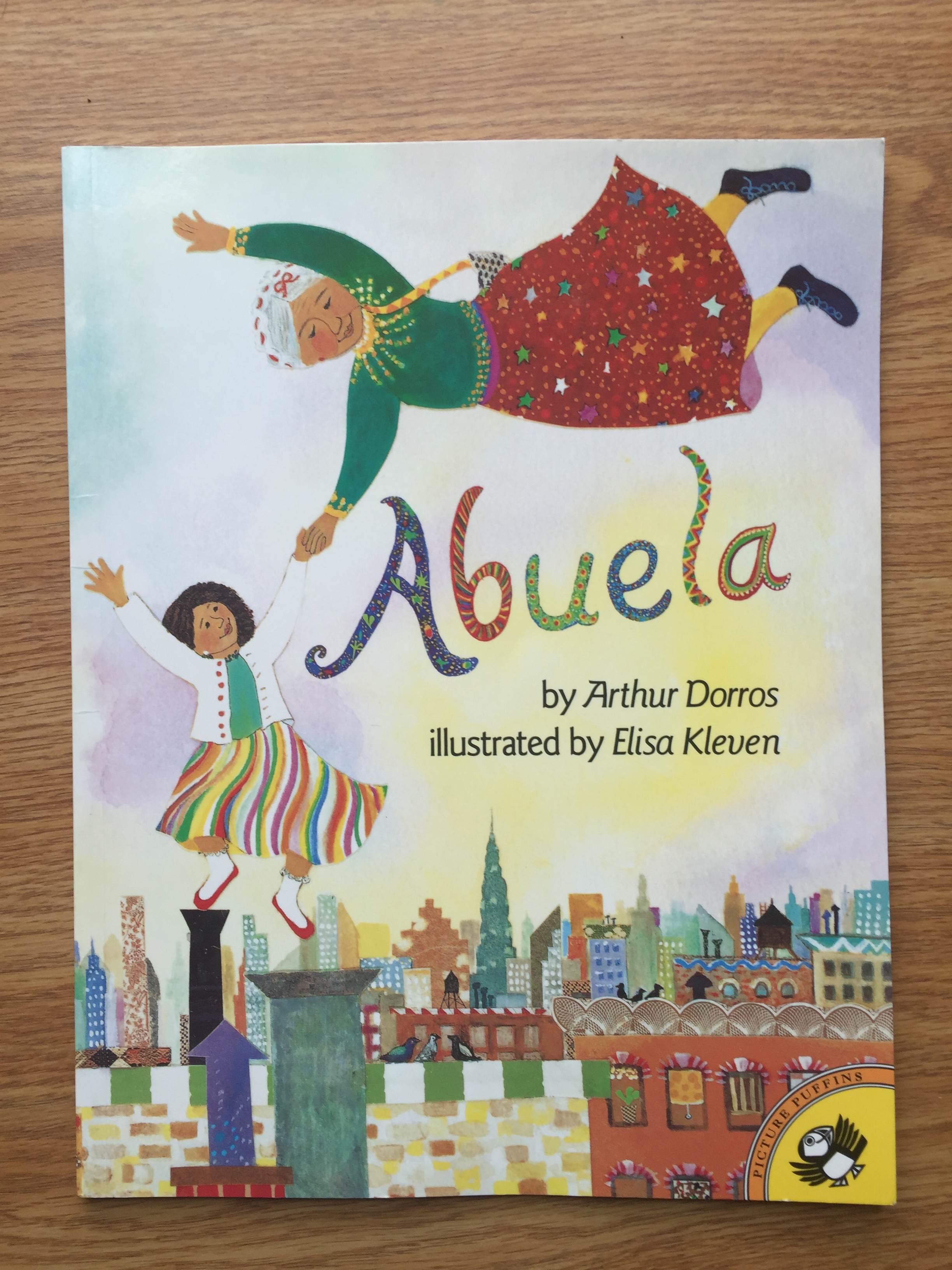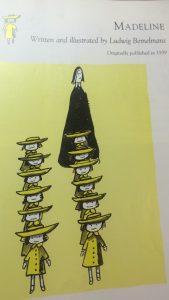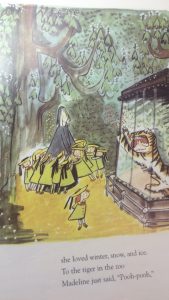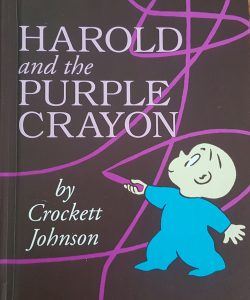
Author: Arthur Dorros
Illustrator: Elisa Kleven
Publisher and Year: Penguin Group 1991
Number of pages: 32
Genre: Fantasy Fiction Picture Book
Analysis
Abuela is the story of Rosalba and her Grandmother who she calls Abuela. The story begins with Rosalba and her abuela going to the park to spend the day. The story continues on a fantastical journey when Rosalba and her abuela get picked up by birds and begin flying in the sky by themselves. They fly over many different parts of New York City and say hello to many people. They continue to float around and visit different friends and family. Eventually, Rosalba and her abuela land by a lake a take a paddleboat ride.

Abuela is a book that is visually very inviting to children. It contains very bright colors in everything, even though realistically the world is not that bright. It also takes care to separate the text from these inviting and exciting illustrations. Having the text in white spaces along the bottom or on another page would usually seem to separate the text from the pictures, but in this case it allows the two to work in tandem. Because of the business of the colors and patterns used in the illustrations, placing the text in its own simple space draws the eye to the text as well because of the stark contrast. It also makes it easier to read without having it over the busy pictures.

Culturally, Abuela blends typical American and Hispanic culture. That is not to say that these cultures cannot coexist in a person, but rather that this book shows how they do exist. In the book, Rosalba’s abuela uses many Spanish words and then translates them so Rosalba can understand. Culturally, this can reflect the idea that some children growing up in bilingual houses in the United States tend to use and understand English more than the other language.

The setting of the book is in New York City, or rather in the air above it as Rosalba and her abuela fly to different places. Having the Hispanic culture that Rosalba’s abuela brings to the book take place the most stereotypical American city combines these two cultures to represent Hispanic Americans. This book could be useful to children as a window, mirror, or door depending on what culture they identify themselves with. Overall, this book could be good tool to use in a classroom to help learn simple Spanish words. It is also a good book to have to further represent different cultures to cultivate a multicultural classroom experience.


















